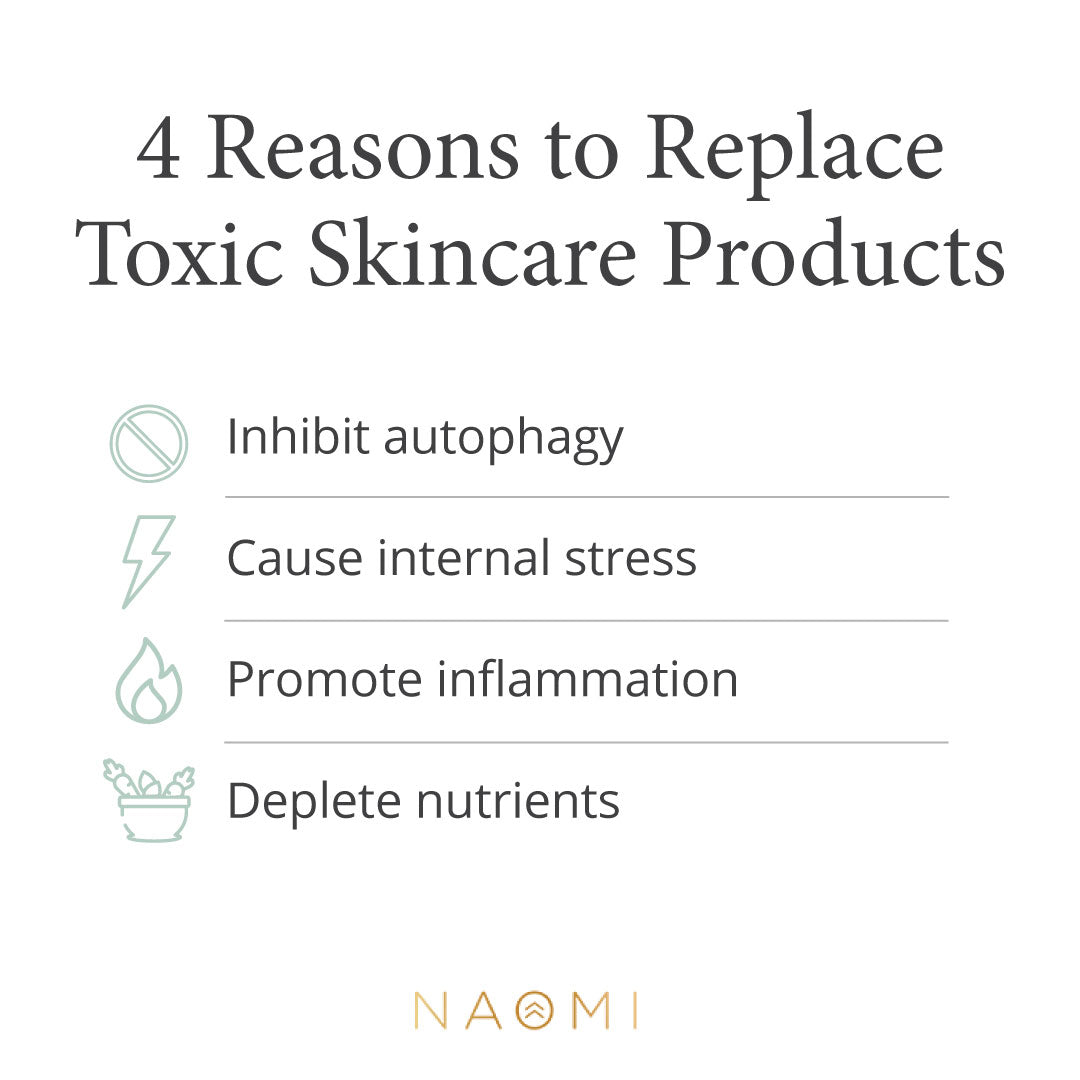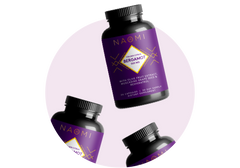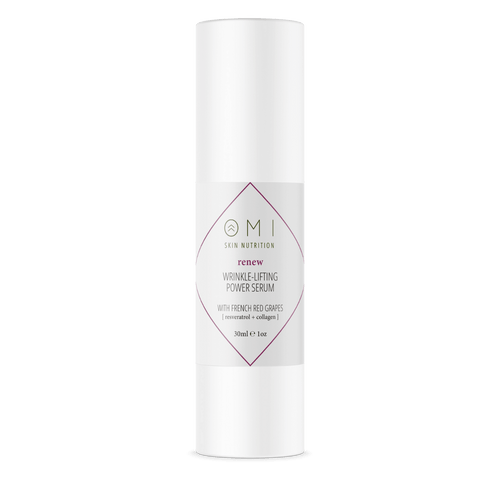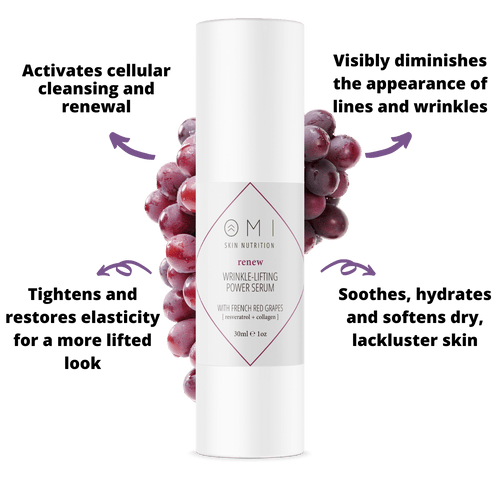Toxic Beauty: Are Your Skincare Products Really Safe?
When you purchase a skincare product, you likely believe it contains ingredients that will improve the health and look of your skin. But the reality is that there’s an ugly truth hiding behind some of the most popular products in skincare—and it’s known as toxic beauty.
Toxic beauty is the idea that many products marketed for their ability to improve skin are actually dangerous skincare products known to contain toxic chemicals that not only age and harm your skin but can also cause a myriad of unhealthy effects throughout your body. Fortunately, you can choose to use nontoxic skincare products and also support your skin from the inside out, which is the most effective way to fight visible aging and get the beautiful glowing skin you desire and, frankly, deserve.
So, keep reading to learn all about what constitutes a toxic beauty product, which to avoid, why you should replace them, the best skincare ingredients to look for, and how to protect your skin from the inside out.
What Are Toxic Beauty Products?
A surprising survey conducted by the Environmental Working Group (EWG) found that 25 percent of female participants used an astonishing 15 or more products on their skin every day—and these products cumulatively contained more than 125 different chemicals.
Because there is no governing body overseeing the safety of many of the products that we put on our hair and skin, these products are often full of toxic skincare ingredients that actually can have the opposite effect of what you’re trying to achieve. In other words, these toxic beauty products may very well make your skin look older instead of younger.
So, why is this the case? In short, it’s because quality truly matters when it comes to skincare. The skin is the human body’s largest organ and absorbs everything you put on it.
Any toxic chemicals and ingredients that are absorbed have a very real effect on your body’s internal ecosystem, which governs your overall health. And anytime internal health isn’t in peak form, it’s reflected in your skin. While it tends to be a vicious cycle, the great news is that it’s one that can be broken with the right combination of skincare products, nutrition, and supplements known to fight aging and inflammation.
But before we dive into what you can do to optimize your body’s internal ecosystem and have the glowing skin of your dreams, let’s take a look at why you should prioritize replacing toxic skincare products and review exactly which ingredients you should be avoiding at all costs.
4 Reasons to Replace Dangerous Skincare Products
Here are the top ways toxic beauty and skincare products harm your health and negatively impact your skin.
1. Inhibit autophagy
You may be surprised to learn that the toxic ingredients hiding in your skincare products actually inhibit your body’s detoxification processes and even make you look older than you are! Essentially, these sorts of products are a fast track to impaired autophagy and aging.
Remember, autophagy is your body’s cellular self-cleansing process and directly contributes to or hinders the visible signs of aging. So, how do toxic skincare ingredients inhibit autophagy? First, certain chemicals are known to trap everyday debris, such as dust, sweat, bacteria, and even your own dead skin and push them into your pores, restricting your skin’s ability to regenerate and renew—the very purpose of autophagy. As you can imagine, this exacerbates certain skin conditions, such as acne and even eczema.
But when you combine this effect with the fact that these chemicals are absorbed into your body down to the cellular level, it’s easy to see how toxic-loaded cells become damaged and can no longer perform the self-cleaning process required to maintain a youthful glow. The result? You experience excessive inflammation that decreases your natural production of collagen and elastin, the proteins known to promote youthful, healthy-looking skin. And when this happens, you’re left with fine lines, wrinkles, and even increased skin pigmentation—all the things you want to avoid by using skincare products!
2. Cause internal stress
When your cells are loaded down with toxins and autophagy is inhibited, this cellular toxicity is known to induce oxidative stress, which is essentially an excess of harmful free radicals and a decrease in the antioxidants that fight them. Oxidative stress is dangerous for your health because it’s been linked to several chronic diseases, including heart disease, diabetes, obesity, and more. But a lack of autophagy isn’t the only way toxic beauty and skincare products can harm your health.
Many of the chemicals found in popular skincare products are known to be endocrine disruptors, meaning that when they’re applied to your skin, they’re absorbed quickly and actually mimic your hormones. This causes a disruption in your delicate hormone balance and results in internal stress that has been associated with everything from premature skin aging and increased acne to fatigue and even elevated cholesterol levels.
3. Promote inflammation
Certain chemicals found in skincare products are known to promote inflammation, which also triggers an imbalance in free radicals and antioxidants. These inflammation-inducing toxic skincare ingredients are absorbed by your skin and into your body. This means that in addition to contributing to hormonal imbalances, dangerous skincare products can also cause inflammation both on your skin and inside your body—all the way down to your cells.
The result? You may see signs of skin conditions such as eczema and/or acne and also experience symptoms of internal inflammation, such as fatigue, pain, unstable moods, gut issues, weight fluctuations, and even lowered immunity.
4. Deplete nutrients
In addition to contributing to stress and increased inflammation, toxic beauty products are also known to actually deplete your body’s nutrient stores. This happens because your body uses greater amounts of nutrients in the form of antioxidants in order to eliminate the toxins from your body.
Specifically, research has shown that certain chemicals and toxins deplete vitamin C, which is known to not only support immune health but also support the production of collagen, elastin, and keratin—critical structural proteins for healthy, youthful-looking skin. And the unfortunate truth is that many of the very toxins known to deplete vital nutrients are lurking in everyday products marketed as beneficial for your skin.

10 Toxic Skincare Ingredients to Avoid
Unfortunately, the list of toxic beauty ingredients lurking in many skincare products is long, but that means it’s all the more important for you to know what to look for. So, if you’re looking for a list of the most toxic skincare products to avoid, consider this your “bad skincare ingredients checker.”
Check out the 10 common ingredients that can negatively affect your skin and overall health from the inside out.
1. Silicones
Silicones are chemicals used as a smoothing agent and are often called by different names in products, making them one of the hardest chemicals to spot in toxic beauty products. But it’s worth the effort because they’re very prevalent in skincare, makeup, and hair care products, meaning they can be applied virtually all over your entire body.
From trapping debris in your pores to contributing to dehydrated, dull skin to interfering with autophagy, silicones cause a variety of skin-related problems known to lead to the development of fine lines and wrinkles.
When sourcing your skincare products, make sure to avoid those containing ingredients that end in “cones,” “conols,” silanes,” and “siloxanes.” These are red flags for silicone-based products.
2. Phthalates
Used as a softener in skincare products, phthalates have been shown to potentially interfere with proper hormonal balance. Unfortunately, it’s not easy to avoid this ingredient as they are increasingly used in many beauty products and fragrances, and manufacturers may not list it as an ingredient.
To avoid this toxic beauty chemical, begin by using products sourced from all-natural ingredients. Also look for products that specify “no synthetic fragrance,” “scented with only essential oils,” or “phthalate-free.” You can also take it one step further and avoid any product that comes in a plastic container that has the number “3” in the center of the recycling symbol, as these include phthalates that can leak into your product.
3. Mineral Oil
Mineral oil is often found in lotions, ointments, and creams, but because its molecular size is too big to be absorbed, it remains on the skin’s surface where it clogs pores and makes it difficult for your skin to breathe. As a result, it can result in acne and irritated skin.
4. Petrolatum
Petrolatum (commonly known as Vaseline) is an emollient approved by the FDA as a skin protectant. But this toxic beauty product works similarly to mineral oil in that it’s known to clog pores. But that’s not all it does: Research deemed petroleum-based products “… the greatest contaminant of the human body.”
So, why was petroleum found to be so harmful? Studies have found that, along with mineral oil, your body can’t metabolize petroleum.
5. Polyethylene Glycol (PEG)
PEG is a mixture of compounds and polymers that have been bonded together instead of functioning as an independent chemical in and of itself. In skincare, it’s typically used as an emollient to soften and moisturize and also to help other ingredients more deeply penetrate the skin.
But PEG is often used in products that have been found to contain potentially dangerous impurities linked to cancer, such as ethylene oxide. And while you can conduct your own research to make sure the manufacturer using the PEG is responsible, it can be difficult to know for sure. Plus, PEG is known to cause skin irritation in those with sensitive skin.
6. Parabens
Similar to phthalates, parabens can also act as endocrine disrupters. They are largely used as a preservative to keep out bacteria and also to soften and moisturize the skin. Unfortunately, several studies have found parabens to be carcinogenic. Since they are often found under chemical names such as methylparaben, propylparaben, isoparaben, or butylparaben, it’s safest to look for products that specify “paraben-free.”
7. Artificial Fragrances
Almost all skincare products come with artificial. fragrances these days—including those labeled as “natural.” Here’s why: First, chemical-based toxic beauty and skincare products don’t smell good on their own, meaning the manufactures need to mask the smell. Second, artificial fragrances are far less expensive than using 100-percent natural scents (such as essential oils).
So, why did artificial fragrances make the list of toxic ingredients in beauty products? Many of the chemical fragrances used in beauty products are top allergens and are even banned in certain places. Common symptoms include headaches, wheezing, vomiting, diarrhea (especially in young children), asthma, contact dermatitis, and reduced pulmonary function.
8. Formaldehyde
When it comes to dangerous skincare products, formaldehyde is likely one ingredient you’ve heard of—and likely because it’s officially classified as a probable human carcinogen, yet it’s still widely used in products such as lotions, deodorants, hair gels, nail polish, and more. This common skincare ingredient is linked to allergies, chronic fatigue, leukemia, depression, dizziness, joint pain, and insomnia, just to mention a few of the major causes for concern.
To avoid formaldehyde in your skincare products, keep an eye out for words such as formalin, DMDM hydantoin, Diazolidinyl urea, Imidazolidinyl urea, Quaternium-15, and Hydroxymethylglycinate when reviewing ingredient lists.
9. Oxybenzone
Oxybenzone is commonly found in sunscreens, moisturizers, and lip balms. It’s a chemical blocker associated with allergic reactions, hormone disruption, cancer, and even low birth weight in babies. Depending on the ingredients, sunscreens are typically categorized as either a mineral or chemical blocker, so opting for mineral blockers is a much safer choice, such as one that uses zinc oxide or titanium dioxide.
10. Sodium Lauryl Sulfate (SLS)
Finally, SLS is a fairly controversial toxic beauty ingredient that’s widely used as a foaming agent in many beauty and skincare products, as well as in toothpastes. While it does help cleanse, it also strips away the skin’s natural oils and moisture, which are necessary for protection. As a result, SLS can be very irritating to the skin. Look for labels that specify “SLS free” to stay on the safe side.
The Best Nontoxic Skincare Products to Use
Now that you know what not to use and which toxic beauty ingredients to avoid at all costs, let’s take a quick look at nontoxic skincare options that are safe for your skin and even your internal health.
Excellent nourishing alternatives in skincare products include jojoba, carnauba, cocoa butter, candelilla, and shea butter, as they all work beautifully to moisturize without sealing the skin. Make sure to read the ingredients label before purchasing your skincare products to ensure they features these nontoxic, all-natural ingredients.
In Summary:
- Toxic beauty is the idea that many products marketed for their ability to improve skin are actually dangerous skincare products known to contain toxic chemicals that not only age and harm your skin but can also cause a myriad of unhealthy effects throughout your body.
- From contributing to toxic buildup in your cells to promoting internal stress and inflammation to depleting essential nutrients, certain skincare ingredients are dangerous to use.
- Some of the most harmful ingredients include silicones, phthalates, parabens, artificial fragrances, formaldehyde, and more.
- Make sure to inspect your current beauty and skincare products and replace any containing harmful ingredients with all-natural formulations featuring ingredients such as jojoba, cocoa butter, candelilla, and others.










